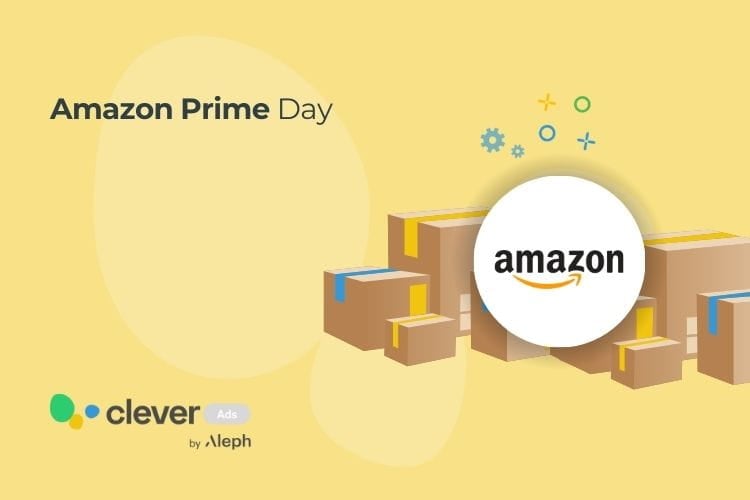Prime Day is not just for Amazon Prime!
The 2024 Summer Prime Day finally arrives! Often considered the leading powerhouse in the eCommerce world, Amazon Prime Day is the unofficial start to the summer sales season. First introduced in 2015, this event was originally a one-day celebration of the company’s 20th anniversary, but has now become a two-day event full of deals, 1-Click payment, and a frenzy of advertising. Check our marketing calendar and plan your campaigns here!
With the launch of Amazon Prime in 2005 and its subsequent success in the U.S. eCommerce market, it seems like you can’t have a successful online store without being available through Amazon Prime. However, that’s not true.
Amazon Prime Day is among the top eCommerce sales events in the world
It generated $12.9 billion in sales in 2023, 1.8 times more than in 2019. Among the most popular days of the year is China’s Singles’ Day, which generated a staggering $31 billion in 2023, more than what Amazon makes in any given two-month period of the year. However, Prime Day generates more sales over this 48-hour period than Black Friday, while Cyber Monday shyly beats the big Amazon day in terms of revenue generated, according to Statista.
Do you have an online store but are not available on Amazon?
Don’t worry! You’re in luck for finding this post 😉 Even if you’re not fully prepared for this year’s event with your Google Ads campaigns because you lost track of time, there are still last-minute options to create your own Amazon Prime Day!
How to create your own Prime Day?
Although reaching these figures is an unfeasible task for any small or medium-sized retailer, the idea of a day with its own identity is possible. In fact, Prime Day gives us some keys to get this marketing action to a good commercial day.
Community
One of the reasons for Prime Day’s success is its community. Amazon has managed to make the most of this concept by creating a hard core of customers willing to pay a flat annual fee for a series of benefits (fast shipping, lower costs, Prime TV…). With them, it has taken the community concept to its maximum exponent, achieving, for example, that in the United States a Prime user spends an average of $1,400, if we continue studying the data provided by Statista.
The idea, applied to our field, must follow the same path; that of building a group of loyal and committed customers. To do this, it will be necessary to offer more than just a good catalog. Value-added services must be the central axis of our strategy to achieve the differentiation that will make them choose us over other alternatives.
Prime Day’s main feature: the offers!
Prime Day is full of offers of all kinds. Following Amazon’s big Spring Sale in March, we have a good sense of what to expect from this year’s event. Shoppers yearn for substantial discounts on a variety of Amazon products, including Fire TVs, Alexa smart speakers, Ring doorbells, Kindles… as well as their line of smart devices. Moreover, according to Amazon, there will be excellent discounts on a wide range of items, including home goods, health and beauty products, among others.
Although undoubtedly getting the volume discounts that Amazon manages can be very difficult, to create our particular big day it will be necessary to provide it with attractive promotions. Searching for the best deals on the most demanded products and selling those that are gathering dust in the warehouse are realistic options.
Differentiation, don’t just copy!
Although El Corte Inglés’s strategy of copying Media Markt’s VAT-free Day worked, it is not always the best idea to copy marketing actions. We can always opt for combining certain features but looking for that point of differentiation that makes us special. And that is where Prime Day has played its cards.
Amazon used its most loyal group of customers to support them with a day of their own. That is its great differentiation with which, on the one hand, it managed to reward consumers who pay with offers, and on the other, it encouraged those who have not yet done so.
In this sense, we must stop for a moment to look for what differentiates us from the rest. It may be a particular service, our approach to certain audiences or our logistics. Whatever it is, we must take it into account when planning our special day and enhance it.
Online and offline
The interrelationship between these two worlds is becoming stronger and stronger. Prime Day demonstrated this by taking its offers to the street with marketing actions at strategic points in addition to expanding its promotions to Whole Foods’ physical supermarkets.
Thinking of the physical or online store as separate departments has long been the wrong approach. These two worlds must go in parallel, seeking synergies, always within our possibilities, but being clear about the advantages of each space and taking advantage of them.
Spy on the competition
Seriously, a little research can take you a long way. Look up products on Amazon that are similar to the ones that your business offers and jot down the keywords with the results that show products that are in the same category or resemble your products. Focus on those that show up on the first page of Amazon search results and click on them. You will see the keyword above the product name in quotation marks.
Attention BigCommerce, PrestaShop, Shopify, and WooCommerce store owners!
Once you have done the “spy work” mentioned above, download the eCommerce Ads tool for the platform(s) that you’re available on by installing the app.
Clever Ads was born because our founders saw that small and medium-sized businesses didn’t have the “AMMO” required to compete with the big guns on the Google Ads, Microsoft Ads, Meta (Facebook and Instagram), Twitter, and TikTok networks.
With the power of your preferred eCommerce platform and the AI of Clever Ads, you will be able to automatically generate keywords for your business’s products – no need to do the busy work mentioned early; we can do it for you.
Google remarketing ads & search ads
Our software also features a tool for creating, automating, and optimizing remarketing and search ads across the Google and Microsoft networks, ultimately allowing you to come up as a search result right when customers are looking for products or services that your company offers. You’re found through a series of keywords, which are “the holy grail” when it comes to eCommerce retailers on Amazon Prime that also come up under these same keywords.
Remarketing ads, on the other hand, are ads that appear after a customer has previously visited your eCommerce site, bringing them closer to their search (and purchase) intent.
The start of the summer sales rush!
Although Prime Day falls in July, why not consider competing with Amazon retailers this time around? We know that small businesses need help and are busier than usual; that’s why we’ve compiled the most vital stats on key dates to help you maximize your eCommerce deals and drive more sales throughout the 2024 summer season.
Prime Day should serve as an intensive keyword research session if you feel your online shop isn’t fully prepared for the promising summer sales ahead. And remember, you don’t have to be on Amazon to see an increase in your eCommerce revenue – you just have to be on top of the game in marketing on the most well-known online advertising platforms.
Good luck!




